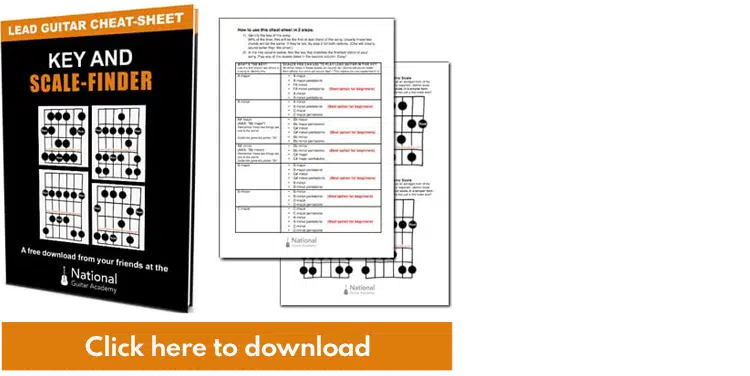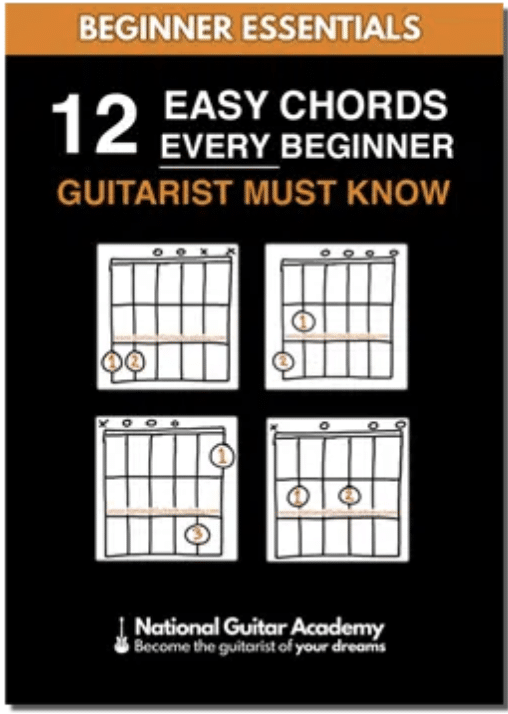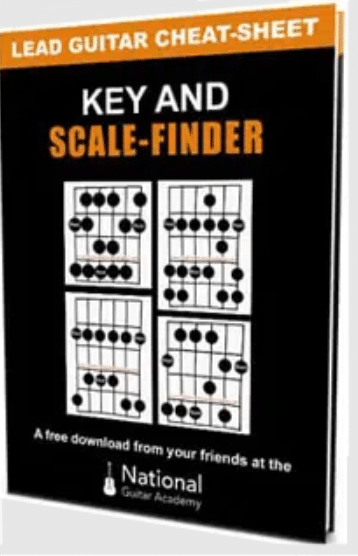The beginning phases of bass guitar can be difficult. In this lesson, we’ll break down the essentials of bass for beginners for you!
Over 100,000 guitar-learners get our world-class guitar tips & tutorials sent straight to their inbox:
Click here to join them
Get our best guitar tips & videos
In this free lesson you will learn…
- How to play bass for beginners
- What the root, third & fifth are & why they’re important
- Fingerpicking for bass
- Flatpicking for bass
- How to play arpeggios!
An Info-Packed Guide To Bass For Beginners
The bass is the coolest instrument.
- It tells everybody what time it is, what chord is being played, and what’s going to happen next.
- The bass guitar is a social instrument, in a constant conversation with every other instrument in the ensemble.
It is versatile – with the bass, you can hold down simple elements of a song, you can elevate the personality of chords, and you can provide counterpoint melodies that weave in with the vocal or instrumental melody.
Also, it is where all the gigs are.
Seriously, learn two notes on the bass and they’ll be calling you up to join their band before the week is out.
The best approach to playing bass for beginners is to consider the bass as something completely different from the guitar.
- A little guitar knowledge, particularly how pitch works on the guitar, is helpful in understanding bass for beginners. It isn’t necessary, however.
- In this lesson, we’re going to go from the ground up so you can understand the bass’s unique and magical function. You also won’t “play bass like a guitar player.”
Let the bass for beginners adventure commence!
Bass For Beginners: The Layout
For purposes of our discussion today, we’re going to be talking about the electric fretted bass, because it’s the easiest to understand from a guitarist’s perspective.
- If you are thinking about going out and getting yourself a bass, the electric fretted bass is the one for you.
- A stand-up bass requires an entirely different set of bass for beginners education.
- A fretless bass does not show you where to put your fingers, and it also requires a different set of instructions.
If you’ve played any guitar at all, you’ll be able to understand the electric bass more easily, and at some point later if you’d like to switch to a fretless bass or a stand-up bass, it will be there for you then!
An electric bass looks a lot like an electric guitar.
- It’s a bit bigger, and there are four strings instead of six, which are also bigger.
- The strings on the bass, low to high, are E, A, D, and G, just like the low strings on the guitar. The bass strings are one octave lower than the guitar.
- The frets on a bass are also farther apart, because of the size of the strings and the frequencies the instrument is responsible for.
These different features of the bass inform the bass’s job in a band.
Download our lead guitar cheat-sheet to make things easier
It's hard to understand which scales work with which keys.
So we created a cheat-sheet! A key and scale-finder that you can use again and again.

Get your personalised guitar-learning plan 🎸
Get a custom guitar-learning plan here: Click here for GuitarMetrics™
World-Class Guitar Courses 🌎
Learn from the world's best guitar educators: Click here for our guitar courses
Bass For Beginners: Special Tuning Considerations
Have you ever tuned a guitar with one of those awesome clip-on tuners?
- You can do the same thing with a bass!
- Remember, the strings are E, A, D, G, just like a guitar, so a guitar tuner will definitely work on a bass.
- Having said that, sometimes tuners just don’t “like” hearing those really low notes.
There are a couple of things you can do about that!
Use the 12th fret. Remember, the 12th fret of the bass, just like the 12th fret of the guitar, is the next iteration of the same note as the open string, one octave up.
It is much easier to hear those notes, so long as your bass is set-up well and doesn’t have any extreme intonation issues.
Use harmonics. This is similar to using the 12th fret, but when you tune with harmonics, you hear a “cleaner” note than you do when you play an open or fretted string.
Here is an excellent tutorial by DeLuca Bass on tuning your bass using harmonics.
Employ a pedal tuner. These tuners plug right into your bass, are battery-operated, and will get you tuned up in no time.
These pedals are also a great incentive for starting a pedalboard!
Here’s the tuner that we favour most for live gigs:
Bass For Beginners: How To Do The Bassist’s Job
One main area of difference between guitar and bass is that the guitar’s six mid-range strings make it a good harmonic and melodic instrument.
- The bass’s low-frequency strings make it less-suited for playing chords, although Les Claypool might beg to differ.
- The idea of playing bass for beginners is that it’s primarily a melodic instrument, so for now you’ll use it to support chords and to play melodies.
- This leads us to how pitch is organized on a bass.
Essentially, it is the same as on the guitar: one fret equals one half-step.
All of the notes organized by half-steps make the chromatic scale.
Go clockwise on this wheel from any open string, and each time you go up one fret, you go over one spot on the wheel. That’s how you find note names on the bass.
- A good rule to remember is that when you go up one letter of the musical alphabet, you go up two frets (a whole step).
- The exception to this lies between E and F and between B and C, where you go up one fret (a half step).
To get your fingers used to the spacing between the frets on a bass, we recommend starting out with a chromatic scale bass exercise, playing one fret at a time.
We’re big fans of Scott’s bass lessons and his distinctive technique and skill.
This bass for beginners lesson uses the chromatic scale and works extremely well.
Pro-Tip: Learning the note names on the bass for beginners is a little bit more important than it is on the guitar, where you’re learning chord shapes and finger sequences.
While you’re familiarizing yourself with the neck of the bass, repeat the note names so that you can get oriented to it quickly.












